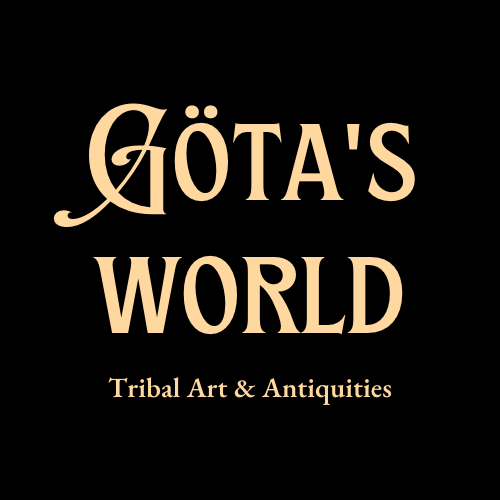Bactrian Bronze Kohl Container
Bactrian Bronze Kohl Container
Couldn't load pickup availability
Bactria-Margiana Archaeological Complex or Bactria, c. 1700 BC to 800AD, Central Asia
This magnificent Bactrian bronze kohl container, dating from approximately 1700 BC to 800 AD, exemplifies the refined artistry and metallurgical expertise of ancient Central Asia. Its rounded body is richly adorned with incised patterns and three prominent semicircular arches sculpted in high relief. The vessel stands on three elegantly curved legs, each terminating in hoof-like feet and crowned with stylized horse head finials, a testament to the importance of equine symbolism in Bactrian culture. The design is completed by an octagonal-section neck and a flat everted rim, enhancing both its aesthetic appeal and practical function.
The Bactria-Margiana Archaeological Complex (BMAC), also known as the Oxus Civilization, flourished between 2250 and 1700 BC in what is now northern Afghanistan, southeastern Turkmenistan, and southern Uzbekistan. This sophisticated Bronze Age society was renowned for its monumental architecture, intricate metalwork, and extensive trade networks. The Bactrians were primarily agrarian, cultivating wheat and barley through advanced irrigation techniques while excelling in the production of fine bronzes, ceramics, and jewelry crafted from semiprecious stones.
Kohl, for which this vessel was intended, has been used as an eye cosmetic since at least the Naqada III period (c. 3100 BC) in Egypt and remained a beauty staple across the ancient world. Traditionally made from stibnite or galena, it was believed to have protective and medicinal properties, shielding the eyes from infections and the sun’s glare. In Islamic tradition, the Prophet Muhammad endorsed the use of kohl, particularly Ithmid (antimony), for its reputed benefits to eyesight and eyelash growth.
This exceptional bronze vessel, with its intricate detailing and symbolic equestrian motifs, stands as a remarkable relic of Bactrian civilization. It reflects not only the region’s artistic sophistication but also the deep cultural and spiritual significance of cosmetics and personal adornment in the ancient world.
Good condition. Wear consistent with age and use. Surface scratches and corrosion due oxidation. Engraved decorations on the body and the rim almost erased by wear. Small hole at the side. Built up heavy encrusted patina, light earthen deposits. Size approx. 8,4cm x 7,0cm x 7,0cm.
Provenance: Danish private collection.
References and further reading:
Margus, Turkmenistan: Ancient oriental kingdom in the old delta of the Murghab river, Wiktor Sarianidi, Publisher Benatzky Druck & Medien, January 1, 2002.
Treasures from the Oxus: The Art and Civilization of Central Asia, Massimo Vidale, Bloomsbury Publishing, 2017.
Thinking Around Grave 3245 in the 'Royal Graveyard' of Gonur (Murghab Delta, Turkmenistan), in: On the Track of Uncovering a Civilisation. A volume in honor of the 80th-anniversary of Victor Sarianidi, Sandro Salvatori, 2010.
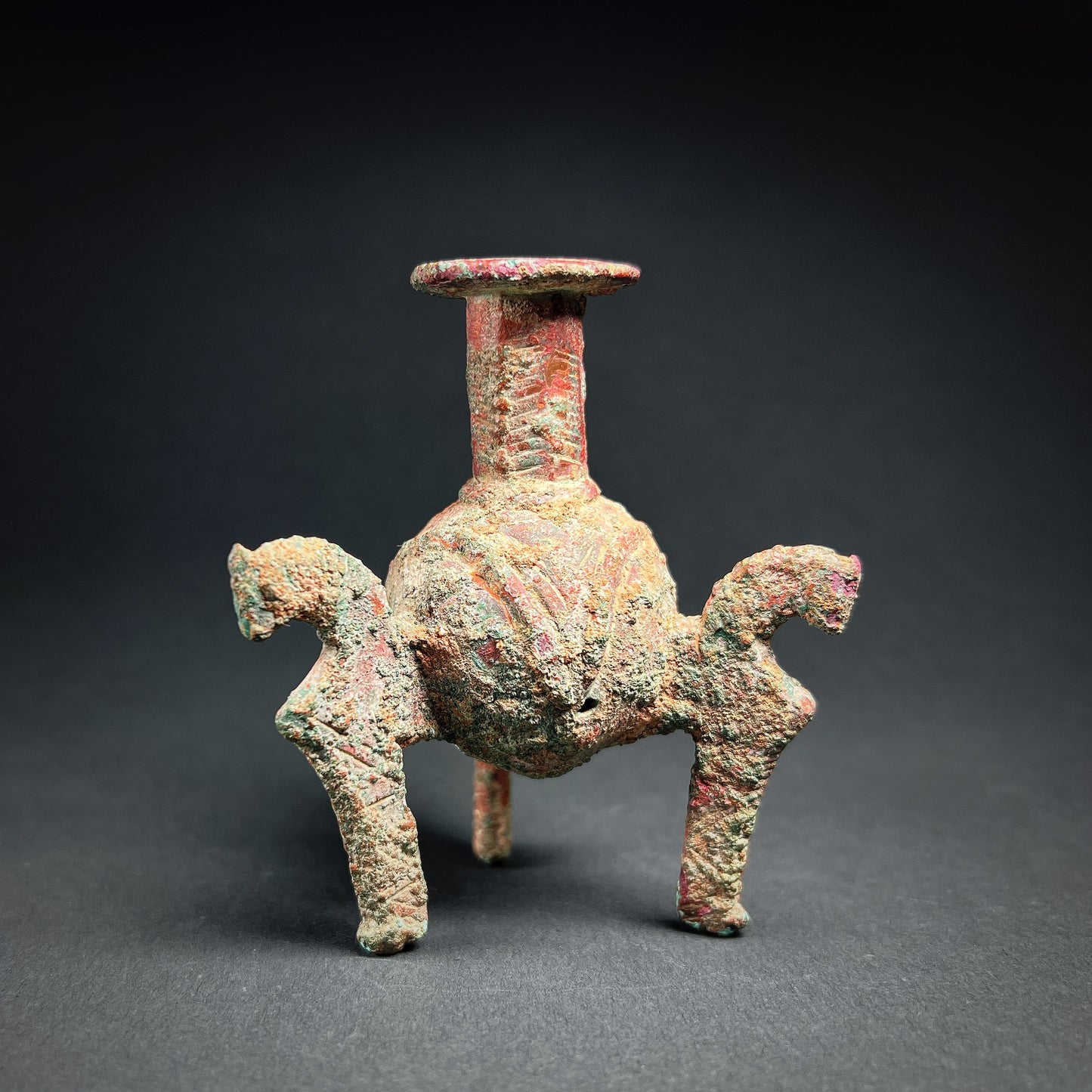
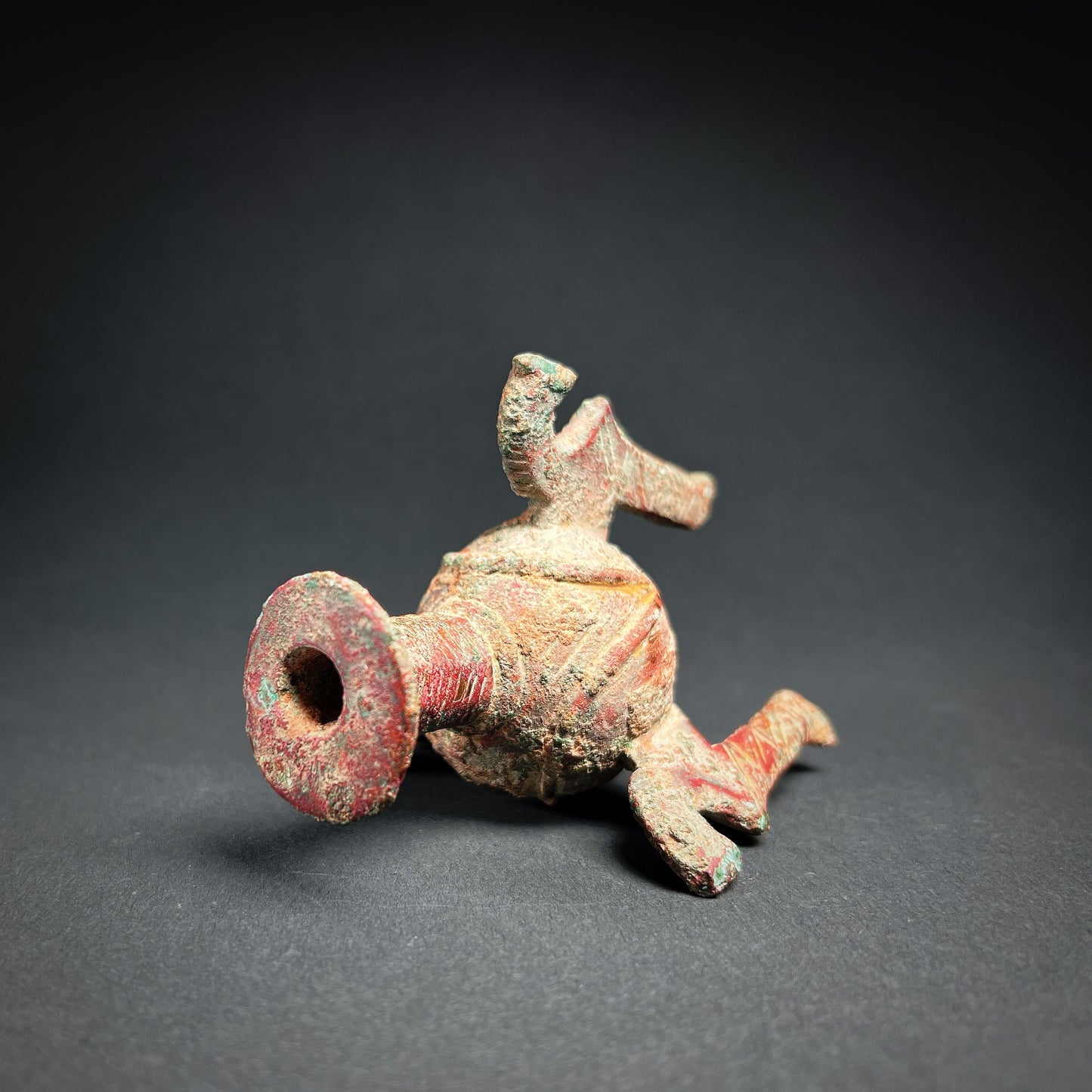
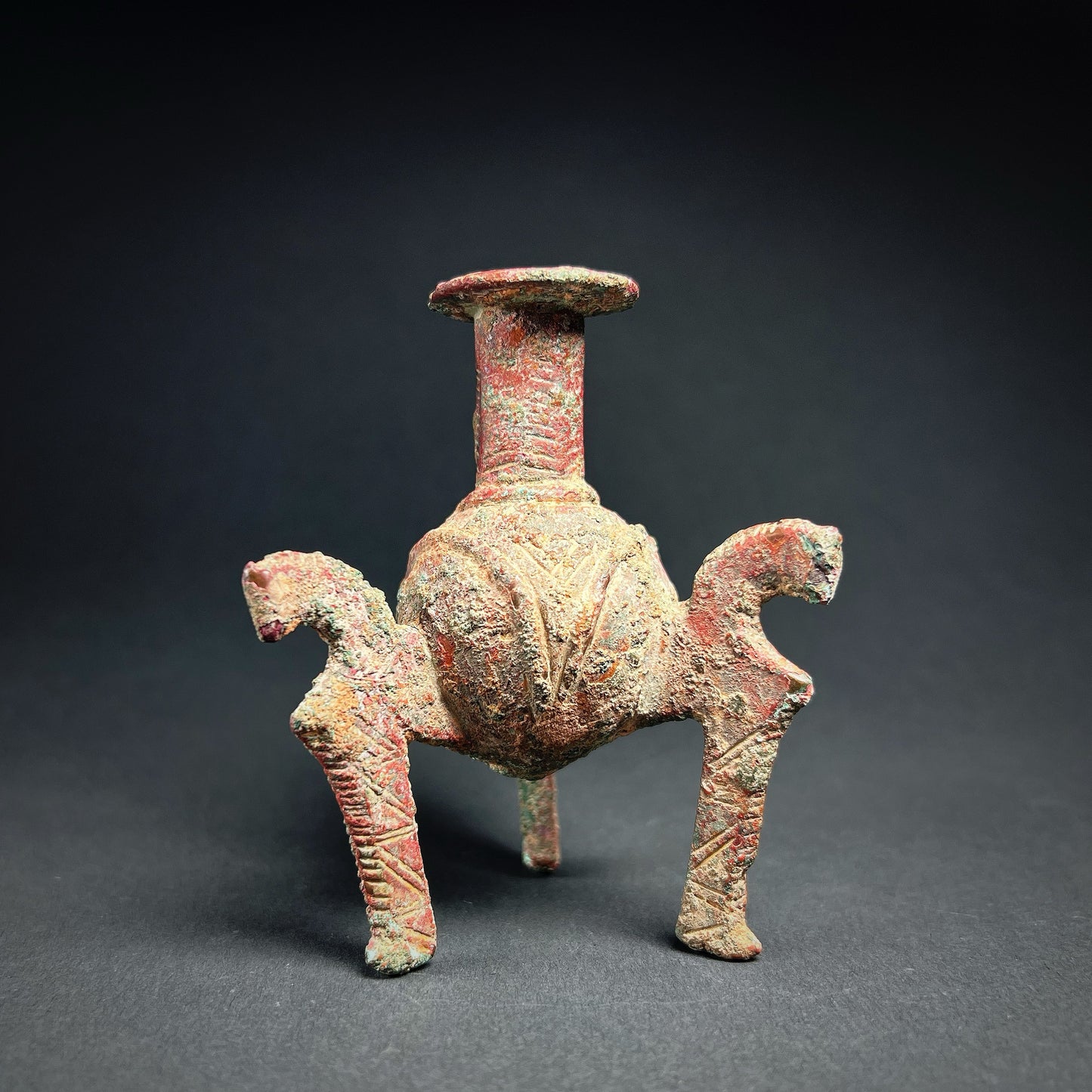
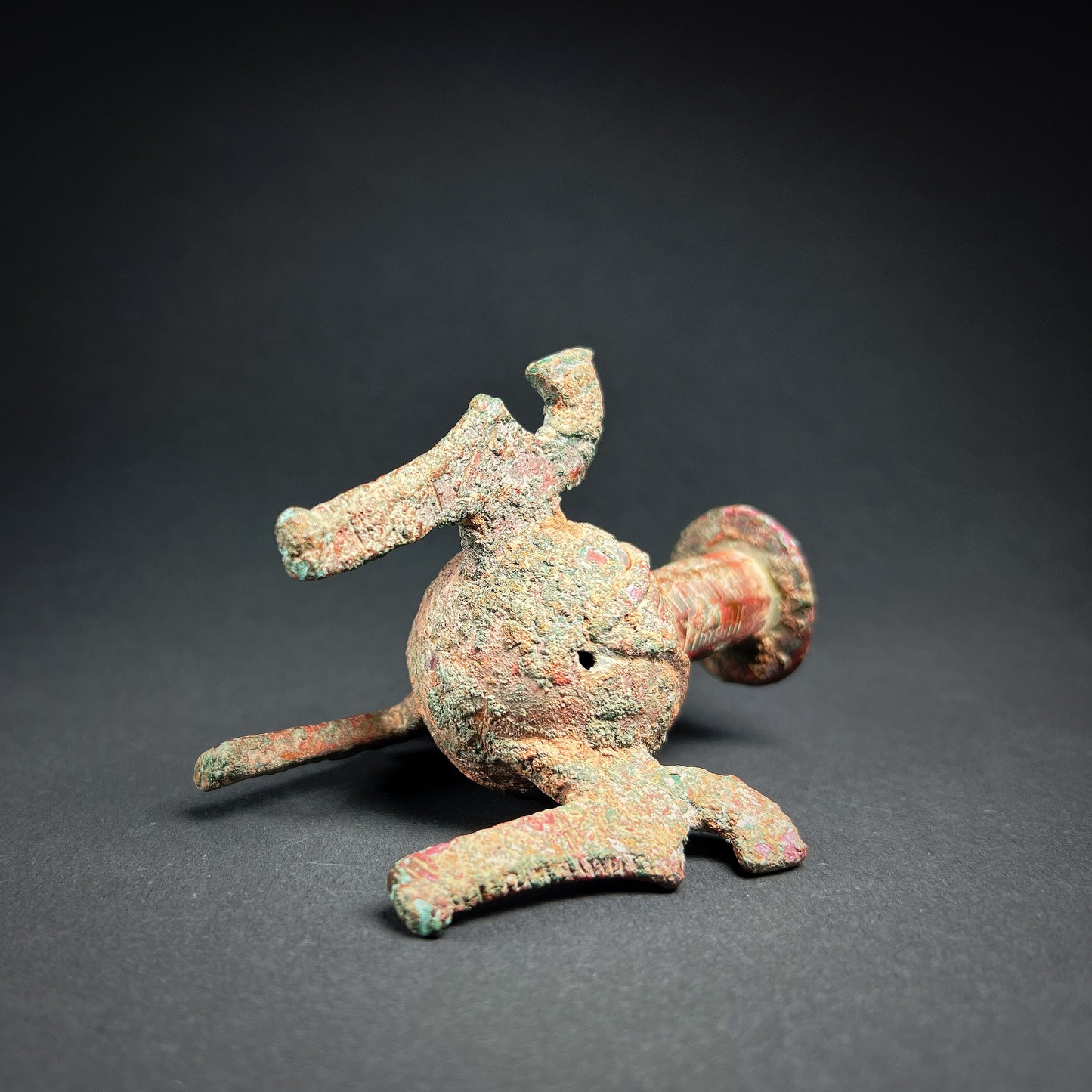
-
Shipping
The shipment will be prepared in the course of 3-5 days and dispatched via Posti Group Oyj or purchased item(s) can be picked up from our shop during the store's opening hours (Tarkk’ampujankatu 4, 00140, Helsinki, Finland). Within the Finland, all items are shipped via Posti Group Oyj unless otherwise requested. We pack the items carefully and mainly in recycled materials because we want to save nature. You will receive the tracking number for your items by e-mail.
-
Returns
Returns and exchange will be accepted within fourteen days (14) of receipt at the purchaser’s cost to include freight and packaging. Items must be returned in the same condition as when they were shipped, and will not be accepted if damaged or altered in any way. Please inform us via email (info@gotanmaailma.fi) or by calling +358408408352 before sending. We do not accept returns more than 14 days after delivery.
